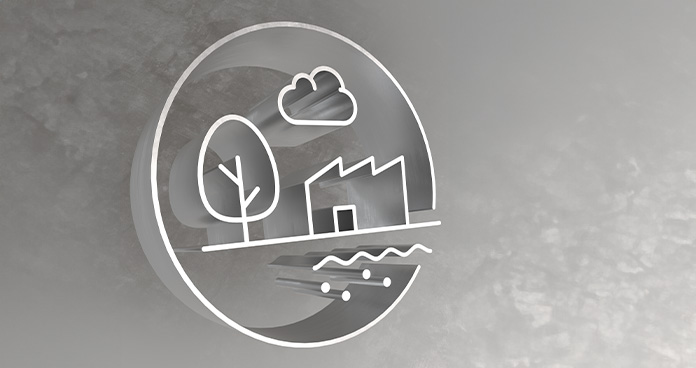
Water is used to cool the units and to generate steam used for energy and is therefore an important operating and auxiliary resource in the entire production and manufacturing process. Water resources are used as sparingly as possible at voestalpine by means of circulation systems and multiple use of process water. In keeping with ISO 14046 and the integrated LCA approach, assessments of the water circulation systems are performed across all production steps and sites.
The volume of water used from 2022 to 2023 fell from 741 million m3 to 739 million m3 (1 m3 corresponds to 0.001 megaliters). Most of this (85%) was sourced from surface water for cooling purposes and returned back to the source in the same quality. The voestalpine water sources meet the freshwater standard with <1,000 mg filtrate dry residue per liter.
More than 95% of the cooling and wastewater discharge streams of voestalpine Group companies were subjected to both quantitative and qualitative parameter monitoring. This periodic and continuous monitoring ensures compliance with applicable national and regional standards.
Direct net fresh water consumption amounted to 15.6 million m3 (previous year: 11.4 million m3), which corresponds to 1.89 m3 per ton of product. The indirect consumption of 66.8 million m3 (2022: 43.6 million m3) in absolute terms, or 8.11 m3 per ton of product, was primarily attributable to the upstream steel production chain.
voestalpine’s water consumption in production and processing has a minor impact on local water systems and does not aggravate conditions in regions already affected by water scarcity. This is the finding of an externally verified study that determined the water scarcity footprint based on an analysis of all production activities across the entire value chain (“cradle to gate”). Determining the “blue water consumption” (i.e., the net consumption of freshwater) and/or the water scarcity footprint of each and every production facility involves analyzing the ways they contribute to the given region’s water scarcity in detail, also taking local hydrogeological conditions into account.
Water extraction 2023
million m3 ,%
Water footprint 2023
in%

